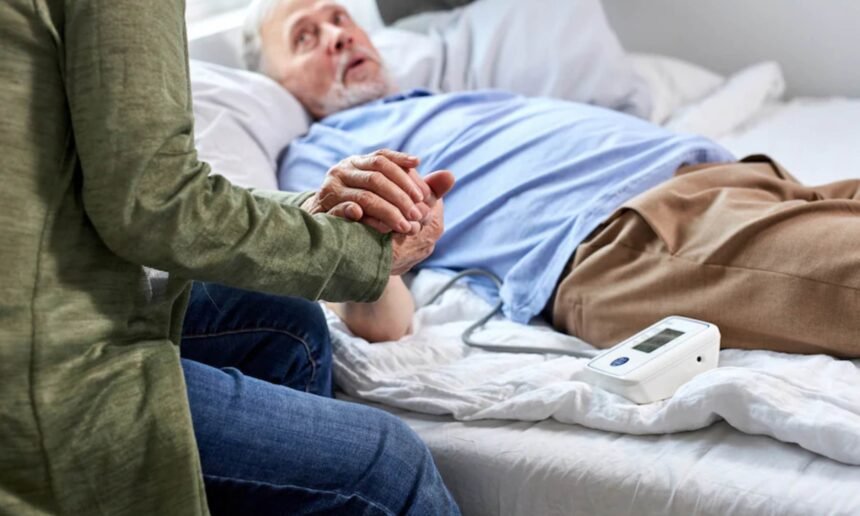Pressure ulcers, also known as bedsores or pressure sores, are a common yet preventable condition in bedridden patients. These painful wounds develop due to prolonged pressure on the skin, particularly in areas with bony prominences like the heels, hips, and lower back. Preventing pressure ulcers (bedsores) is crucial for ensuring patient comfort, avoiding infections, and promoting overall well-being. This guide covers essential strategies to prevent these wounds effectively.
Understanding Pressure Ulcers and Their Causes
Before diving into prevention, it’s important to understand what causes pressure ulcers:
- Prolonged Pressure – Constant pressure restricts blood flow to the skin, leading to tissue damage.
- Friction – Repeated rubbing of the skin against bedding or clothing can cause irritation and make the skin vulnerable.
- Shear Forces – When the skin moves in one direction while the underlying tissue moves in another, it can cause deeper tissue damage.
- Moisture – Excessive moisture from sweat, urine, or wound drainage weakens the skin, increasing the risk of breakdown.
- Poor Nutrition – Lack of essential nutrients impairs wound healing and weakens the skin’s defenses.
Already noticing early signs of bedsores? Read our guide on Early Signs of Pressure Ulcers and Why Timely Care Matters.
Essential Tips for Preventing Pressure Ulcers
1. Regular Repositioning
One of the most effective ways to prevent pressure sores is by reducing prolonged pressure on specific areas:
- Bedridden patients should be repositioned at least every 2 hours.
- If using a wheelchair, shift position every 15-30 minutes.
- Use a turning schedule to ensure all pressure points are relieved consistently.
Pressure ulcers develop due to prolonged pressure, friction, and shear forces. Learn more about the causes and stages of pressure ulcers in detail here.
2. Use Supportive Surfaces
Specialized mattresses and cushions can significantly reduce the risk of developing pressure ulcers:
- Pressure-redistributing mattresses (foam, gel, or air-filled) help distribute weight evenly.
- Cushions for wheelchairs and beds provide added comfort and support.
- Avoid using traditional pillows under heels or back, as they can increase pressure.
3. Maintain Skin Hygiene and Moisture Balance
Proper skin care is essential to prevent chronic wounds:
- Keep the skin clean and dry, especially for incontinent patients.
- Use mild soaps and moisturizing creams to prevent skin dryness.
- Apply barrier creams to protect against moisture-related damage.
4. Optimize Nutrition and Hydration
A well-balanced diet plays a vital role in skin health and wound prevention:
- Ensure adequate protein intake to support tissue repair.
- Include vitamins C and E, zinc, and iron to boost skin integrity.
- Keep the patient hydrated to maintain skin elasticity and resilience.
5. Minimize Friction and Shear
Reducing friction and shear forces helps prevent skin damage:
- Use silk-like bed sheets and avoid rough fabrics.
- Elevate the head of the bed no more than 30 degrees to prevent sliding.
- Encourage patients to use their arms to reposition themselves when possible.
6. Perform Regular Skin Inspections
Early detection is key to preventing severe wound care treatments:
- Check high-risk areas (heels, elbows, tailbone, shoulders) daily.
- Look for redness, swelling, blisters, or skin breakdown.
- Use a mirror or assistance to inspect hard-to-see areas.
7. Encourage Movement and Physical Therapy
Even for bedridden patients, small movements can improve circulation:
- Perform passive range-of-motion exercises to stimulate blood flow.
- Encourage patients to adjust their position as much as possible.
- If feasible, use physical therapy sessions to promote mobility.
8. Manage Chronic Conditions
Underlying health conditions can increase the risk of pressure sores:
- Keep diabetes, vascular diseases, and other chronic illnesses under control.
- Monitor blood sugar levels in diabetic patients to enhance wound healing.
- Consult a healthcare provider for medications that may affect skin health.
9. Provide Adequate Bedding and Clothing
The right materials can prevent irritation and pressure ulcers:
- Use soft, breathable sheets to prevent overheating.
- Ensure clothing is loose-fitting and made from moisture-wicking fabrics.
- Avoid wrinkles in bedding, as they can create pressure points.
10. Use Protective Devices
Specialized medical devices can aid in preventing bedsores:
- Heel protectors reduce pressure on the heels.
- Elbow pads protect the arms from constant friction.
- Bed cradles keep blankets from pressing on sensitive areas.
If basic wound care strategies aren’t enough, advanced therapies can help treat pressure ulcers effectively. Read about Advanced Therapies For Pressure ulcers.
Importance of Caregiver Involvement
Caregivers play a crucial role in preventing pressure ulcers (bedsores):
- Stay vigilant in repositioning and monitoring the patient’s skin.
- Ensure the patient is receiving nutritional and hydration support.
- Communicate with healthcare providers to adjust care plans as needed.
By following these essential tips, caregivers and healthcare professionals can significantly reduce the risk of chronic wounds in bedridden patients. Prevention is always better than treatment, and proactive care can lead to improved patient comfort, quicker recovery, and a better quality of life.


Leave a Reply